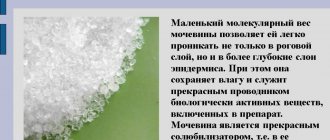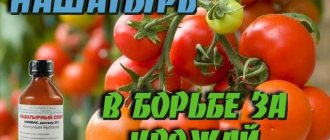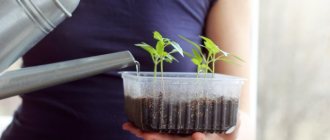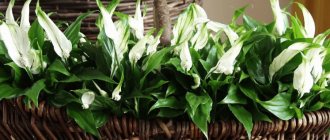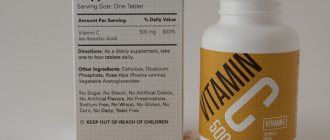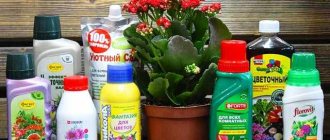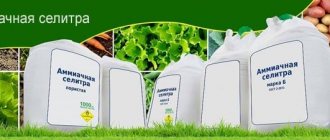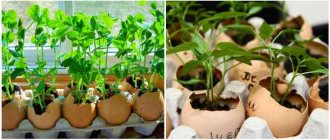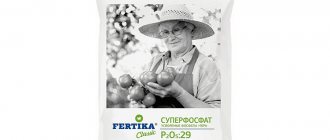Every family throws away dozens of eggshells every month, without even thinking that they can be used in the country as fertilizer with great benefit when growing flowers and vegetables, trees and shrubs. Eggshells are an excellent fertilizer for flowers, vegetable gardens and gardens. There are several ways to use it and each of them is very effective. Why do eggshells benefit plants?
Composition and structure of eggshells
The structure of the shell is a crystalline lattice consisting mainly of calcium carbonate (more than 90% of the total composition).
It contains as additional substances:
- nitrogen;
- sulfur;
- iron;
- phosphorus;
- potassium;
- organic protein;
- magnesium;
- molybdenum.
This combination of substances has a beneficial effect on the plant and is very useful for the growth and nutrition of various crops. It is these components that nitrogen-phosphorus fertilizers consist of.
Chemistry lesson
First, a very brief description of what eggshells for plants are. Or more precisely, what components it contains and what effect these components have on the soil.
Eggshells are 90-95% calcium carbonate (CaCO3), popularly called limestone. Lime is generally good for increasing or stabilizing soil pH, but the effects of eggshells are very slow. The fact is that in order to dissolve this very lime, carbonic acid (HCO₃) must be present in the soil, which is formed during the growing season in the root system of the plant. And with the help of carbonic acid, a compound (Ca (HCO3)2) is formed - calcium bicarbonate, which in turn forms calcium ions.
What does all this ultimately lead to? First, upon contact with water, the pH value slowly but steadily increases. And secondly, calcium ions released during the reaction with carbon dioxide, as it were, cement the soil, making it more dense.
The conclusion naturally arises: eggshells as a fertilizer are suitable for increasing the pH value of the soil, but under the condition of an absolute calcium deficiency. Therefore, be sure to test the substrate before use.
What are the benefits of shells for plants?
- Egg shells reduce the acidity of the soil and improve its structure and composition. The soil becomes more alkaline, lighter and looser, and its air and water permeability also increases. In addition, reduced soil acidity increases the fruiting of many garden and vegetable crops. This is especially true for clayey and heavy soils.
- The structure and composition of such a product, unlike lime and chalk, promotes the rapid absorption of nutrients from the soil.
- Due to the presence of calcium and magnesium in the shell, active growth of the above-ground part of the plant occurs, and the process of photosynthesis and metabolism improves.
- When using such fertilizer for seeds, their germination improves and germination increases.
- The presence of calcium in the soil promotes better absorption by plants of all useful substances from it, and also the activation of nodule bacteria, which retain nitrogen in the root zone, which is important for its growth and full development.
- Calcium strengthens the vascular walls through which nutrients enter all parts of the plant.
- Enriches the soil with minerals.
According to research, to neutralize soil acidity, at least 0.5 kg of crushed shells per 1 square meter should be used. m. If the soil is very acidic and heavy, then the dosage can be increased to 1 kg.
Calcium in the egg shell is a natural mineral that helps in growing plants
It is no secret that any agricultural crop or flower is very responsive to the content of various microelements in the soil. Fertilizers not only stimulate the growth of flowers and vegetables, but also increase their yield. Eggshells contain huge amounts of calcium carbonate. This chemical element promotes the growth of above-ground parts of plants, plays an important role in the process of photosynthesis, enhances metabolism in tissues, and accelerates the consumption of reserve proteins of seeds during germination.
Most of all, it is consumed by crops with a large mass of above-ground organs. In addition to calcium, the fertilizer, in the form of eggshells, contains 27 more chemical elements. The most important of them are: copper, iron, potassium, manganese, fluorine, sulfur, phosphorus, selenium, silicon, zinc, molybdenum.
What plants are suitable for this fertilizer?
As a fertilizer, eggshells are suitable for those plants that do not like soil with high acidity:
- bell pepper;
- tomatoes;
- lettuce;
- beet;
- broccoli;
- cabbage;
- melon;
- onion;
- currant;
- eggplants.
These plants prefer an alkaline environment, so they always respond well to such feeding.
Suitable environment
Eggshells are a highly alkaline preparation and can deoxidize the soil. The answer to the question of which plants are fertilized with eggshells will be all those that prefer to grow on slightly acidic soils with an environment closer to neutral: tomatoes, peppers, eggplants, potatoes, lettuce and greens, pumpkins and melons, onions and legumes, as well as apple trees, pears , raspberries, currants and others.
When fertilizing, you should avoid beds with cabbage, cucumbers and zucchini, strawberries, beans and spinach. It is also necessary to exclude the type of fertilizing for many indoor plants that prefer an acidic substrate: hydrangeas, violets, azaleas, camellias, etc.
What plants can be harmed?
Fertilizing from the shell will not appeal to crops that require highly acidic soil, these include:
- Chinese cabbage;
- spinach;
- beans;
- peas;
- cucumbers;
- zucchini;
- strawberries
The product should not be added to indoor flowers that grow in acidic soil:
- gloxinia;
- camellias;
- azaleas;
- gardenias;
- pelargoniums;
- hydrangeas;
- violets.
Advantages and disadvantages
When applying fertilizer on your personal plot, it is important to familiarize yourself with possible positive and negative options for the development of events after application.
Advantages
- The shell contains a huge amount of useful microelements and can compete with store-bought products.
- Top dressing is used for most crops that grow in central Russia.
- Fertilizer will improve productivity, accelerate growth, and enrich it with minerals.
- Is a pest repeller.
- Absolutely safe for humans.
- Does not require large financial costs.
Flaws
- Some plants do not accept this type of feeding and may react unconventionally.
- Indoor flowers, as well as some decorative flowers in flower beds, are very sensitive. An overdose of substances contained in the shell can cause the death of plants.
Preparation of fertilizer
First of all, you need to thoroughly rinse and dry the peeling eggs. Then they are calcined in the oven for 30 minutes at a temperature of 150 degrees. After this procedure, nutrients are more easily transferred into the soil. After this, they are crushed using a blender, meat grinder, rolling pin or hammer.
Then you need to prepare an infusion. To do this, take the shells of 9-10 eggs, fill them with 3 liters of hot water, close the lid tightly and leave in a dark, cool place for 2 weeks. When the infusion acquires a cloudy color and the smell of hydrogen sulfide, the fertilizer is “ripe.”
When using this infusion, it should be diluted with water in a ratio of 1:3.
The peelings can be used dry, poured into holes or scattered around plants. Fertilizers from egg peels are also prepared with the addition of additional ingredients:
- onion peel;
- limestone;
- chicken droppings;
- humus;
- chalk;
- nettle;
- wood ash.
General rules for using fertilizer
In order for fertilizing to be as effective as possible and not cause harm, you should adhere to the general rules of application:
- If you plan to use the fertilizer in dry form, then the shells must be crushed before application. This will allow it to act on the soil more effectively, and will also prevent large fragments from injuring the roots.
- Fertilizer is applied no more than once a week or even every 14 days, in order to avoid oversaturation of the soil with calcium.
- It is imperative to follow the norms for applying fertilizing: add it to the seedlings at the rate of 1 tbsp. spoon per 200 grams, and adult plants - 500 g per 1 sq. m. garden.
- If the amount of fertilizer is limited, then it is applied directly under the stem of the plant.
- When planting seedlings, 2-3 tablespoons of crushed peelings should be added to the hole.
- For the best effect, apply in stages: when sowing seeds, for seedlings, when planting in the ground, when feeding until the ovary forms.
In addition, you should follow the rules for storing and preparing cleanings so that they do not emit an unpleasant odor, and in order to prevent the proliferation of putrefactive bacteria. That is why the shells are thoroughly washed, dried, the inner protein film is removed and stored in a dry and dark place. It is advisable to dry them outdoors or indoors where there are drafts.
According to the recommendations of experts, fertilizing is applied only until the ovaries appear. After this, it is not recommended to apply the product, otherwise it may cause a delay in fruit ripening.
Rules for collecting raw materials
Procurement of a calcium source should be carried out in the cold season. Before the onset of winter, chickens lay eggs protected by a stronger shell with a higher Ca content.
The greatest amount of calcium is found in eggs with brown shells.
Boiled egg shells are less useful because they lose a lot of minerals during the heat treatment process, but they can be used for mulching the soil and for pest control. The shells of boiled eggs must be cleaned of the layer of protein film to prevent the spread of bacteria.
Raw egg shells are ideal for use as containers for germinating seeds.
Raw materials from fresh eggs should be washed under the tap and dried, spread in a thin layer on paper.
The shells of boiled specimens can be dried immediately. To save space, the husks need to be crushed and sent to a storage container. Waste should be kept in a cool, dry place until the sowing season.
Large and hard shells can be used as containers for seedlings. They need to be washed and dried. To avoid breakage, it should be filled with cotton wool and placed in a box.
Important! The raw materials are first finely ground or pounded in a mortar.
How to fertilize correctly
Egg shells can be used in several ways, depending on the stage of plant development.
It can be:
- seeds for seedlings and or ground crops;
- grown seedlings;
- mature plants;
- indoor flowers.
Seeds
In order for seedlings to appear faster, after sowing, the seeds are sprinkled with crushed eggshells on top and only then covered with soil. The second option is to pour some egg shells into the bottom of the container for sowing seedlings and cover the top with earth. This will make the soil more nutritious.
Seedlings
Eggshells are useful as a preventative against rot. For example, if you add it to the soil for tomato seedlings, the likelihood that they will develop blossom end rot is sharply reduced, since this disease occurs due to a lack of calcium in the soil.
In addition, it is recommended to dust the seedlings with crushed egg peels in order to prevent blackleg disease, while the shells should be crushed to dust.
It has been noted that egg peels can be harmful for early seedlings (before the appearance of the 3rd true leaf).
Another method of using eggshells for seedlings is to create “cups” from them for sowing seeds. You can make small pots from the halves of the shells, fill them with soil and sow the seeds. This way they will receive additional nutrients. And you can plant seedlings together with egg cups, since as the roots grow in the soil, they will disintegrate.
Feeding mature plants
When fertilizing adult plants, eggshells are added to the holes to saturate the soil with calcium and nutrients.
To do this, use an infusion of eggshells and water, aged for at least 5-7 days. Before use, it is diluted with water in a ratio of 1:3 and poured into the wells in an amount of no more than 0.5 liters of solution for each.
The product is used for feeding:
- bell pepper;
- eggplant;
- beets;
- tomatoes and other vegetables.
Dry shells are used for feeding:
- Luke;
- potatoes;
- carrots.
Indoor flowers
To fertilize indoor flowers, eggshells are used as an infusion or in dry crushed form. It is also suitable for creating a system for draining excess liquid from the roots. To do this, lay crushed shells in a layer of 2-3 cm at the bottom of the flower pot, then add soil and plant the plants. This drainage method allows for normal fluid circulation and does not allow water to stagnate and cause rot in the roots. Even as drainage, eggshells work as a fertilizer, releasing calcium and other elements to the soil.
Gardeners note that it is advisable to use eggshells in the form of an infusion; this method is more effective and gives better results.
The plant should be watered with this infusion no more than once a week, a few hours before the main watering.
Before preparing the infusion or pouring the shells into pots, it must be calcined in the oven.
Mint
Egg shell particles are not recommended for fertilizing mint beds. Acidic soil, soft soil without sharp and hard parts is suitable for growing such a crop.
Using shells allows you to saturate the soil with calcium and reduce acidity. At the same time, such a component can be added to the soil once every 4-5 years, because the effect is cumulative.
- Author: iarriba
Rate this article:
- 5
- 4
- 3
- 2
- 1
(4 votes, average: 4.5 out of 5)
Share with your friends!
Garden recipes with eggshells
There are many recipes for fertilizers using eggshells. The main advantage of such fertilizers is that they:
- time-tested;
- non-toxic;
- safe;
- give good results.
What do you think about eggshells as fertilizer?
Positively
Negative
A mixture of eggshells and ash
You need to mix the shells (previously calcined in the oven and crushed) and wood ash in a ratio of 1:2, respectively.
Gardeners note that this mixture gives incredible results: the plants become strong, significantly increase in growth, and their productivity also increases.
The mixture is scattered over the beds in a thin layer, then watered generously. The procedure is carried out 1-2 times a week for a month.
With limestone
If you need to not only reduce the acidity of the soil, but also feed the plants, then eggshells are mixed with limestone in a 1:1 ratio and diluted with water to a liquid state. After this, root fertilizing of garden crops is carried out.
Mixing with humus
The humus is diluted with water to the required concentration, and then crushed shells are added per 10 liters of diluted humus - 1 liter jar.
Mulching with eggshells
A great way to get rid of pests such as slugs, snails, and mole crickets. To do this, it is enough to grind the shells well and scatter them around the plants. This will become a kind of obstacle in the path of pests and they will soon stop attacking plants.
When mulching, be aware that the shells can attract birds, and they can also cause damage to the crop.
Abroad, eggshells are often used both as an independent fertilizer and as an auxiliary component of natural fertilizers. In addition, it is an excellent remedy for combating parasites and plant diseases.
Cautions
Very often, the reason for the death of certain plant varieties is the banal ignorance of gardeners. For example, there are varieties and individual crops that prefer acidic soil. It is suitable for many flowers and house plants. Other crops do not grow well in alkaline soil. That is why they need to be well watered and loosened.
However, if you begin to reduce the acidity of the soil, the plants may not respond well. They become lethargic, they will hurt, and if you do not notice the reaction for a long time, death is possible. This applies to some varieties of cucumbers, pumpkins and many ornamental flowers.
Expert opinion
Chernyaeva Tatyana Dmitrievna
Absolutely loves gardening and grows only organic vegetables
Ask a Question
Do not scatter large pieces of shells among plants.
- Firstly, you can injure the crops, which is fraught with various infections and so on.
- Secondly, such shells take a very long time to be converted into fertilizer, and most likely the plants will not benefit from it. Therefore, it is better to grind eggshells into powder.
The shell should not be left uncovered. Many people try to scatter the powder over the beds before digging. It is important not to leave the shell on the surface, but to dig it into the soil. Otherwise, you may attract birds, resulting in the loss of your entire harvest.
